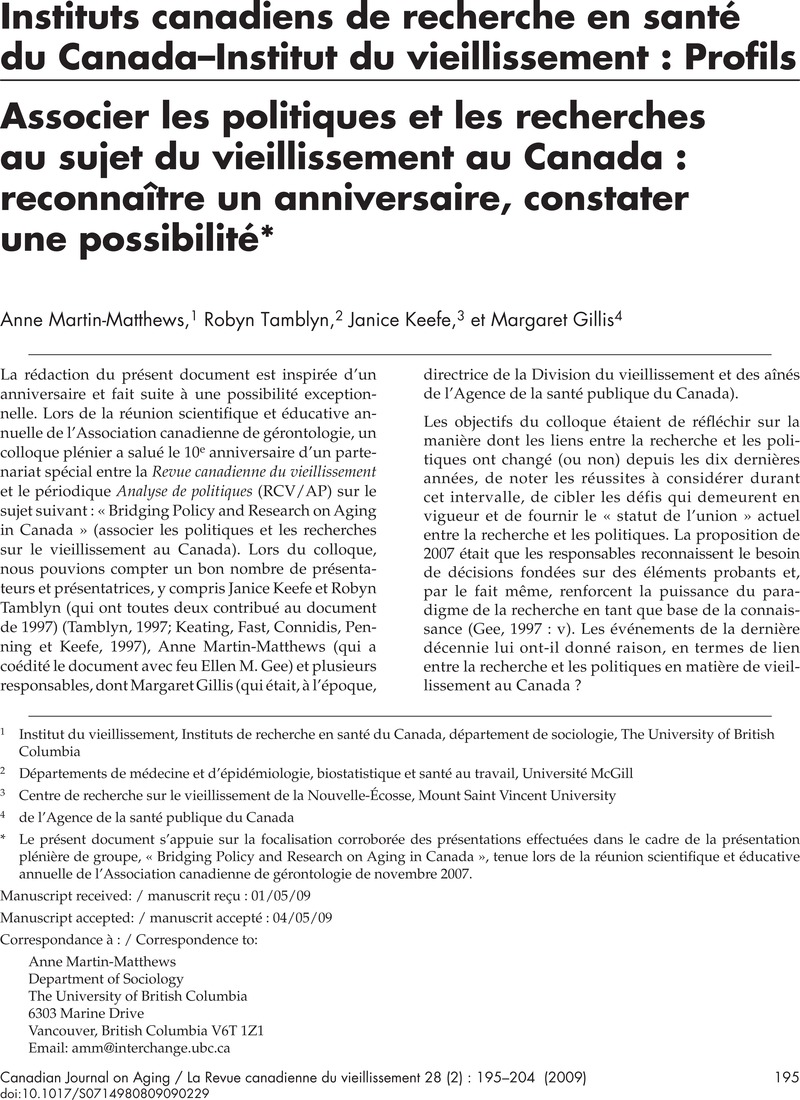No CrossRef data available.
Article contents
Associer les politiques et les recherches au sujet du vieillissement au Canada : reconnaître un anniversaire, constater une possibilité*
Published online by Cambridge University Press: 01 June 2009
Abstract

- Type
- Canadian Institutes of Health Research–Institute of Aging: Profiles/Instituts canadiens de recherche en santé du Canada–Institut du vieillissement : Profils
- Information
- Canadian Journal on Aging / La Revue canadienne du vieillissement , Volume 28 , Issue 2 , June 2009 , pp. 195 - 204
- Copyright
- Copyright © Canadian Association on Gerontology 2009
Footnotes
Le présent document s’appuie sur la focalisation corroborée des présentations effectuées dans le cadre de la présentation plénière de groupe, « Bridging Policy and Research on Aging in Canada », tenue lors de la réunion scientifique et éducative annuelle de l’Association canadienne de gérontologie de novembre 2007.


